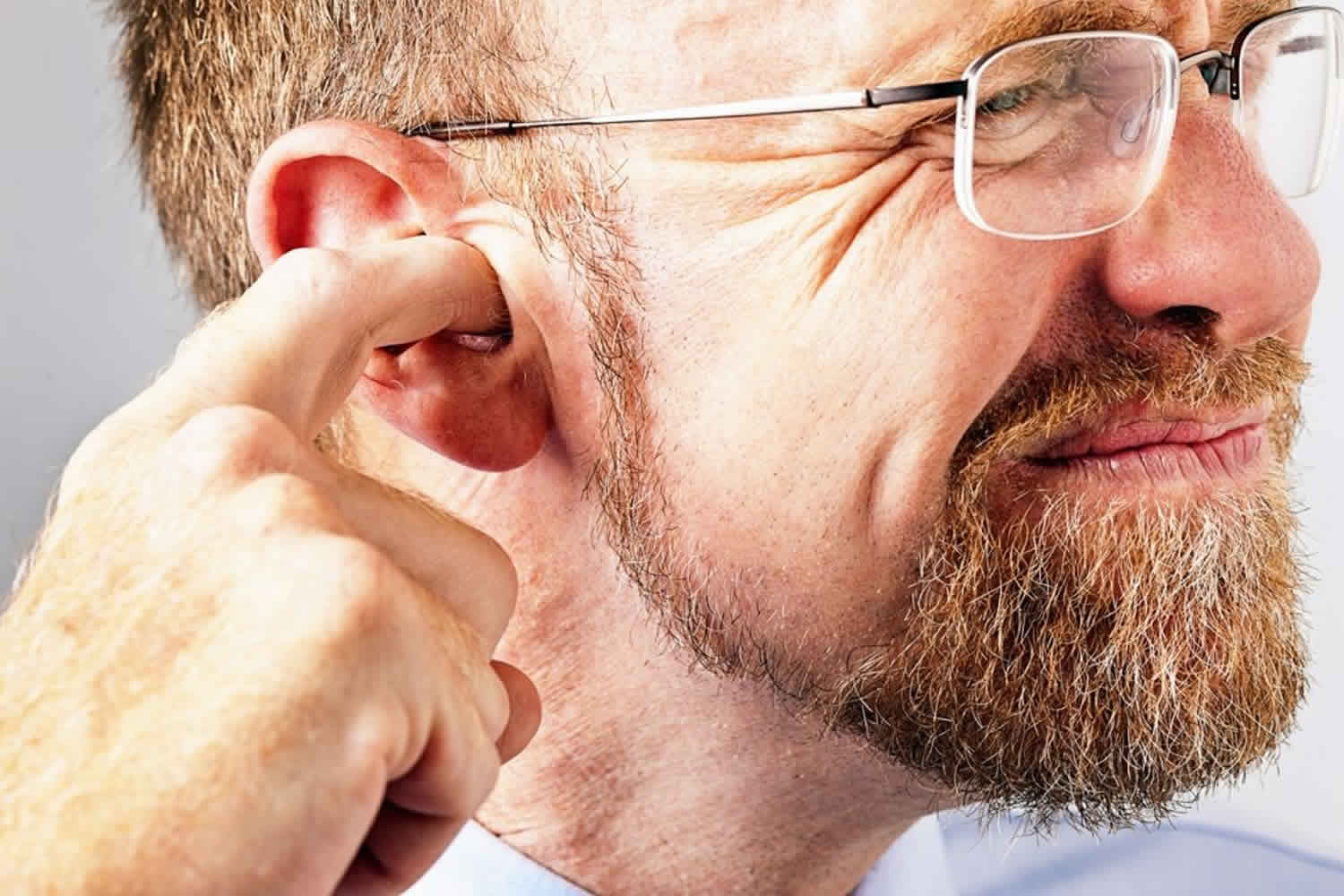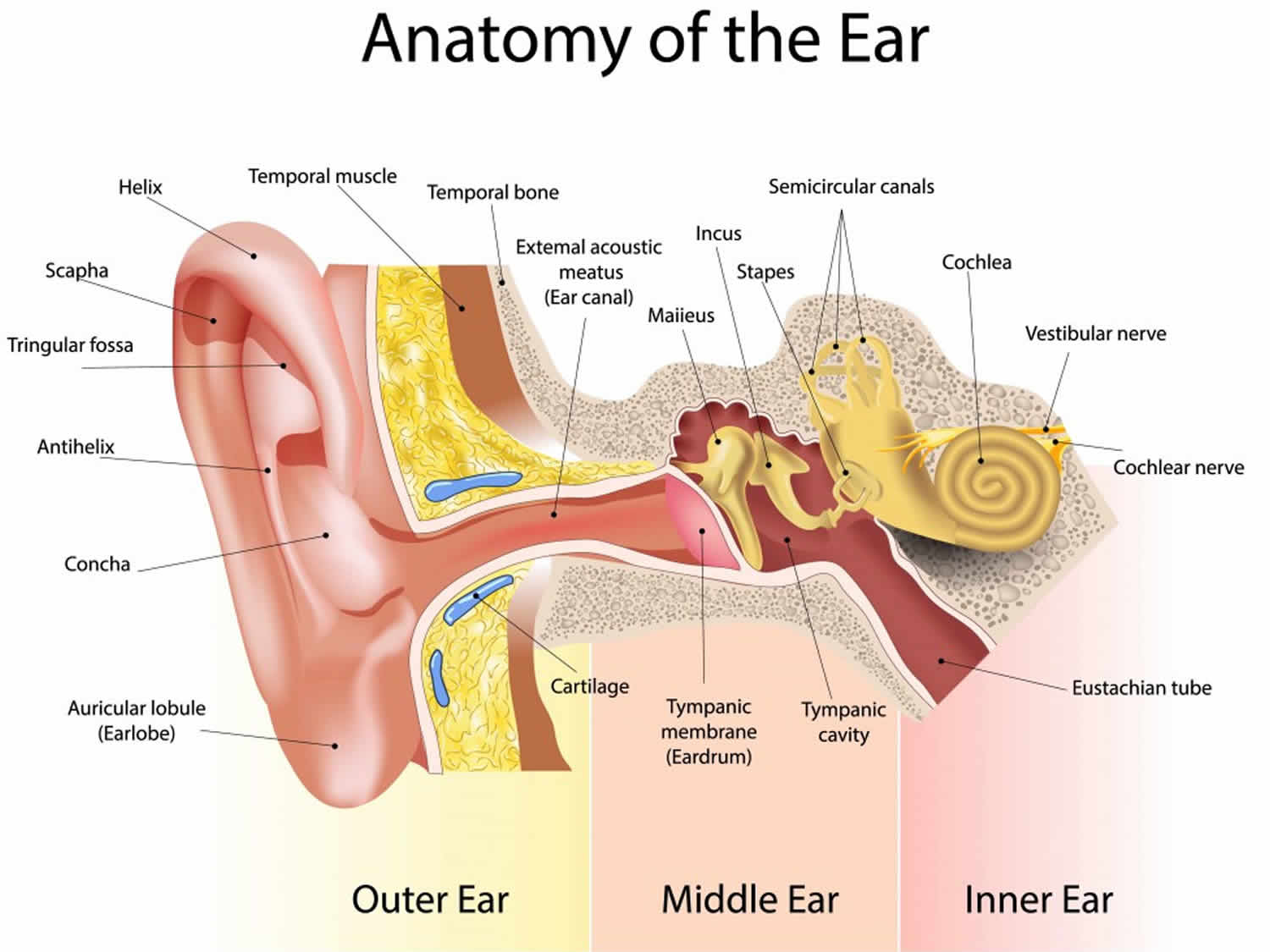How to clear a clogged ear
“Clogged ear” is a non-specific term that could mean earwax blockage in your outer ear canal or eustachian tubes blockage. The eustachian tube is a tube that runs from the middle of each ear to the back of your throat. Normally, the eustachian tube drains fluid that is made in the middle ear. If the eustachian tube tube gets blocked, fluid can build up. This can lead to infection.
- Ear infections are common in infants and children because the eustachian tubes are easily clogged.
- Ear infections can also occur in adults, although they are less common than in children.
In terms of “clogged ear” due to ear wax, your doctor can determine whether you have earwax blockage by looking in your ear with a special instrument that lights and magnifies your inner ear (otoscope).
The wax in your ears is secreted by glands in the skin that lines the outer half of your ear canals. The wax and tiny hairs in these passages trap dust and other foreign particles that could damage deeper structures, such as your eardrum.
In most people, a small amount of earwax regularly makes its way to the opening of the ear, where it’s washed away or falls out as new wax is secreted to replace it. If you secrete an excessive amount of wax or if earwax isn’t cleared effectively, it may build up and block your ear canal.
Earwax blockages commonly occur when people try to clean their ears on their own by placing cotton swabs or other items in their ears. This often just pushes wax deeper into the ear, rather than removing it.
Wax removal is most safely done by a doctor. Your ear canal and eardrum are delicate and can be damaged easily by excess earwax. Don’t try to remove earwax yourself with any device placed into your ear canal, especially if you have had ear surgery, have a hole (perforation) in your eardrum, or are having ear pain or drainage.
Your doctor can remove excess ear wax using a small, curved instrument called a curet or by using suction while inspecting the ear. Your doctor can also flush out the wax using a water pick or a rubber-bulb syringe filled with warm water.
If earwax buildup is a recurring problem, your doctor may recommend that you use a wax-removal medication, such as carbamide peroxide (Debrox Earwax Removal Kit, Murine Ear Wax Removal System). Because these drops can irritate the delicate skin of the eardrum and ear canal, use them only as directed.
Home remedies
If your eardrum doesn’t contain a tube or have a hole in it, these self-care measures may help you remove excess earwax that’s blocking your ear canal:
- Soften the wax. Use an eyedropper to apply a few drops of baby oil, mineral oil, glycerin or hydrogen peroxide in your ear canal.
- Use warm water. After a day or two, when the wax is softened, use a rubber-bulb syringe to gently squirt warm water into your ear canal. Tilt your head and pull your outer ear up and back to straighten your ear canal. When finished irrigating, tip your head to the side to let the water drain out.
- Dry your ear canal. When finished, gently dry your outer ear with a towel or hand-held dryer.
You may need to repeat this wax-softening and irrigation procedure a few times before the excess earwax falls out. However, the softening agents may only loosen the outer layer of the wax and cause it to lodge deeper in the ear canal or against the eardrum. If your symptoms don’t improve after a few treatments, see your doctor.
Earwax removal kits available in stores also can be effective at removing wax buildup. Ask your doctor for advice on how to properly select and use alternative earwax removal methods.
Don’t try to dig it out
Never attempt to dig out excessive or hardened earwax with available items, such as a paper clip, a cotton swab or a hairpin. You may push the wax farther into your ear and cause serious damage to the lining of your ear canal or eardrum.
How to clear eustachian tube
Eustachian tubes are a specialized system that connects your middle ear to the back of your throat. The proper function of these tubes is essential for draining fluid and ensuring that proper air pressure in the ear is maintained. If you’ve flown in an airplane before, then you may have noticed how a change in air pressure can affect your hearing and how comfortable your ears feel. You may also notice that when you yawn or swallow, your eustachian tubes allow air to enter into the middle ears briefly, which often works to equalize air pressure.
While imbalance in middle ear pressure occurs in most people from time to time due to colds, sinus infections, allergies, and airplane rides, it is common for some people to suffer from, severe ear problems that cause an excessive amount of pain or discomfort. This is especially common in children who have a higher risk of ear infections due to the shorter length of their eustachian tubes.
You may experience a feeling of fullness or pressure in your ears. You may also have ear pain, dizziness and muffled hearing. As swelling from the cold subsides, the obstruction usually resolves.
Anything that causes the eustachian tubes to become swollen or blocked makes more fluid build up in the middle ear behind the eardrum. Some causes are:
- Allergies
- Colds and sinus infections
- Excess mucus and saliva produced during teething
- Infected or overgrown adenoids (lymph tissue in the upper part of the throat)
- Tobacco smoke
Ear infections are also more likely in children who spend a lot of time drinking from a sippy cup or bottle while lying on their back. Getting water in the ears will not cause an acute ear infection, unless the eardrum has a hole in it.
Acute ear infections most often occur in the winter. You cannot catch an ear infection from someone else. But a cold that spreads among children may cause some of them to get ear infections.
Risk factors for acute ear infections include:
- Attending day care (especially centers with more than 6 children)
- Changes in altitude or climate
- Cold climate
- Exposure to smoke
- Family history of ear infections
- Not being breastfed
- Pacifier use
- Recent ear infection
- Recent illness of any type (because illness lowers the body’s resistance to infection)
In many cases. a blocked ear can be alleviated by closing your mouth, pinching your nostrils closed, and gently blowing like you would when blowing your nose. Chewing sugar-free gum, yawning, or swallowing may have the same effect to open your eustachian tubes. If you hear a popping noise, you know you have succeeded.
Why flying, it is especially important that adults advise children to follow these tactics during takeoff and during landing in order to maintain proper air pressure and to prevent ear pain. If an ear infection is the underlying cause, then antibiotics may be needed.
If your problems persist or become quite painful, it is important you see your doctor to find out what is causing the problem.
Other options for clearing blocked eustachian tubes may include:
- Nasal decongestants, but for no more than a few days
- Topical nasal steroids, especially in people with allergies
- Ventilation tubes, in severe cases, to drain fluid and relieve pressure
Some ear infections clear on their own without antibiotics. Often, treating the pain and allowing the body time to heal itself is all that is needed:
- Apply a warm cloth or warm water bottle to the affected ear.
- Use over-the-counter pain relief drops for ears. Or, ask the provider about prescription eardrops to relieve pain.
- Take over-the-counter medicines such as ibuprofen or acetaminophen for pain or fever. DO NOT give aspirin to children.
All children younger than 6 months with a fever or symptoms of an ear infection should see a doctor. Children who are older than 6 months may be watched at home if they DO NOT have:
- A fever higher than 102°F (38.9°C)
- More severe pain or other symptoms
- Other medical problems
If there is no improvement or if symptoms get worse, schedule an appointment with your doctor to determine whether antibiotics are needed.
See your doctor if your symptoms are severe or last more than two weeks.
Antibiotics
A virus or bacteria can cause ear infections. Antibiotics will not help an infection that is caused by a virus. Most providers don’t prescribe antibiotics for every ear infection. However, all children younger than 6 months with an ear infection are treated with antibiotics.
Your doctor is more likely to prescribe antibiotics if your child:
- Is under age 2
- Has a fever
- Appears sick
- Does not improve in 24 to 48 hours
If antibiotics are prescribed, it is important to take them every day and to take all of the medicine. DO NOT stop the medicine when symptoms go away. If the antibiotics do not seem to be working within 48 to 72 hours, contact your provider. You may need to switch to a different antibiotic.
Side effects of antibiotics may include nausea, vomiting, and diarrhea. Although rare, serious allergic reactions may also occur.
Some children have repeat ear infections that seem to go away between episodes. They may receive a smaller, daily dose of antibiotics to prevent new infections.
Surgery
For a chronically blocked ear or more severe ear infection, an ENT surgeon may need to perform surgery. This type of surgery usually involves a small incision in the eardrum in order to drain any fluid that had built up and to equalize air pressure.
If an infection does not go away with the usual medical treatment, or if a child has many ear infections over a short period of time, your doctor may recommend ear tubes:
- A tiny tube is inserted into the eardrum, keeping open a small hole that allows air to get in so fluids can drain more easily.
- Usually the tubes fall out by themselves. Those that don’t fall out may be removed in the provider’s office.
If the adenoids are enlarged, removing them with surgery may be considered if ear infections continue to occur. Removing tonsils does not seem to help prevent ear infections.






